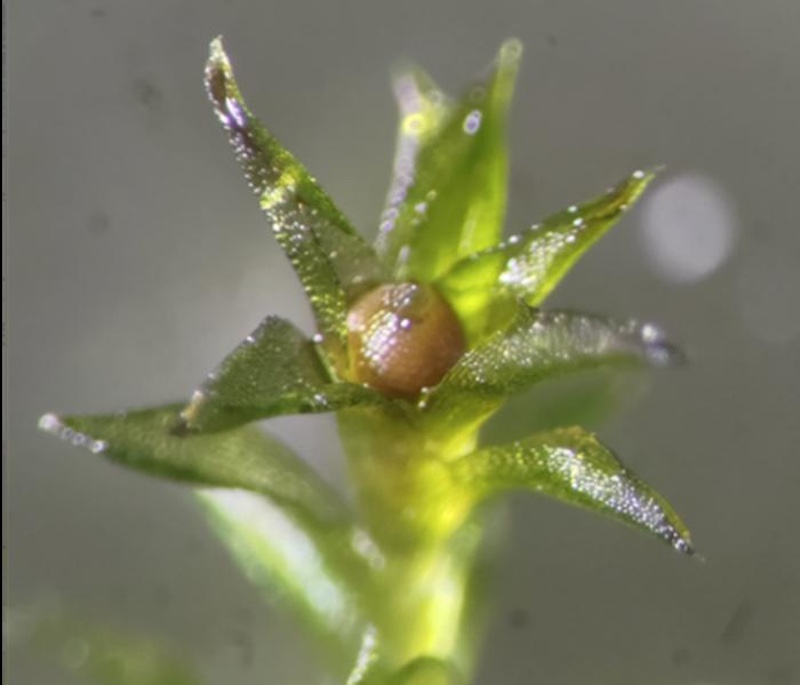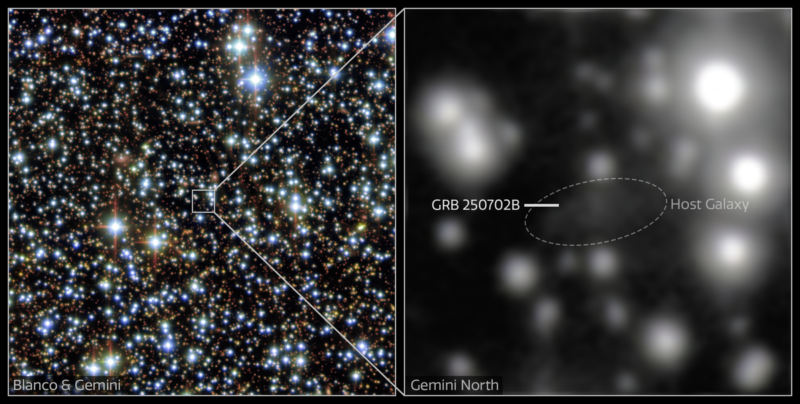Now Reading: Dark matter might leave a colorful ‘fingerprint’ on light
-
01
Dark matter might leave a colorful ‘fingerprint’ on light
Dark matter might leave a colorful ‘fingerprint’ on light


Scientists have long agreed that dark matter – the mysterious substance that makes up 85% of all matter in the universe – doesn’t interact with light. But a new study suggests dark matter might not be so dark after all.
Researchers at the University of York announced on October 13, 2025, that dark matter might leave a faint splash of color on light it encounters. This fingerprint would be blue or red, depending on the type of dark matter the light passes through.
While the tint would be incredibly subtle, the researchers say the next generation of telescopes could potentially detect it. If so, it would be a major breakthrough in the quest to understand this strange substance, which is currently only measurable through its gravitational pull.
The researchers published their peer-reviewed study on September 27 in the journal Physics Letters B.
Shining a light on dark matter
The new study doesn’t suggest that dark matter directly interacts with light. Instead, the researchers say dark matter could be indirectly connected to light through a chain of interactions with other particles, such as the Higgs boson.
This string of subatomic interactions could cause photons – light particles – to scatter slightly when they encounter dark matter particles, producing a faint splash of color.
Mikhail Bashkanov, study co-author, said:
It’s a fairly unusual question to ask in the scientific world, because most researchers would agree that dark matter is dark, but we have shown that even dark matter that is the darkest kind imaginable could still have a kind of color signature.
Some forms of dark matter are darker than others
When Bashkanov talks of the “darkest kind” of dark matter, he’s referring to different ideas of how dark matter works. While scientists agree that dark matter doesn’t reflect, absorb or emit light, some conceptions of dark matter do have some connection to photons, making them less dark.
For instance, a leading hypothesis for dark matter is the WIMP, or weakly interacting massive particle. This form of dark matter particle would interact with normal matter via the weak nuclear force, which is one of the four known fundamental forces in the universe. And because of this, it’s thought that when two WIMPs collide, they could annihilate each other and produce photons, or light.
On the other hand, some models of dark matter would only interact with normal matter via gravity. They wouldn’t be able to convert into photons, so they’re thought of as darker.
However, the study says that even matter as dark as this could leave an indirect fingerprint on light, through the chain of subatomic interactions. And the color of the fingerprint could indicate which hypothetical form of dark matter – WIMP or purely gravitational – the light has passed through.
Red or blue?
The scientists found that light passing through a cloud of WIMPs is more likely to have its energetic blue photons scattered away. That means the lower-energy photons, which produce redder light, are more likely to make it through to reach a distant observer.
On the other hand, light passing through purely gravitational dark matter is more likely to have its red photons deflected away, leaving its blue photons to reach the observer.
So light passing through WIMPs would have a red tint, and light passing through purely gravitational dark matter would have a blue tint.
If astronomers detected such a tint in the light coming from a distant galaxy, they would be able to work out which form of dark matter lies between the galaxy and Earth. It could be instrumental in helping us distinguish between competing dark matter models.
Unfortunately, this colorful fingerprint would be far too faint for us to detect with current technology. But that could soon change. Bashkanov said:
It’s a fascinating idea, and what is even more exciting is that, under certain conditions, this color might actually be detectable. With the right kind of next-generation telescopes, we could measure it. That means astronomy could tell us something completely new about the nature of dark matter, making the search for it much simpler.
Bottom line: A new study says light passing through dark matter could pick up a telltale potentially detectable red or blue tint.
Source: Dark matter: Red or blue?
Read more: Could we find dark matter in clouds around neutron stars?
The post Dark matter might leave a colorful ‘fingerprint’ on light first appeared on EarthSky.
Stay Informed With the Latest & Most Important News
Previous Post
Next Post
-
 012024 in Review: Highlights from NASA in Silicon Valley
012024 in Review: Highlights from NASA in Silicon Valley -
 02Panasonic Leica Summilux DG 15mm f/1.7 ASPH review
02Panasonic Leica Summilux DG 15mm f/1.7 ASPH review -
 03From Polymerization-Enabled Folding and Assembly to Chemical Evolution: Key Processes for Emergence of Functional Polymers in the Origin of Life
03From Polymerization-Enabled Folding and Assembly to Chemical Evolution: Key Processes for Emergence of Functional Polymers in the Origin of Life -
 04How New NASA, India Earth Satellite NISAR Will See Earth
04How New NASA, India Earth Satellite NISAR Will See Earth -
 05And Thus Begins A New Year For Life On Earth
05And Thus Begins A New Year For Life On Earth -
 06Astronomy Activation Ambassadors: A New Era
06Astronomy Activation Ambassadors: A New Era -
07SpaceX launch surge helps set new global launch record in 2024




















